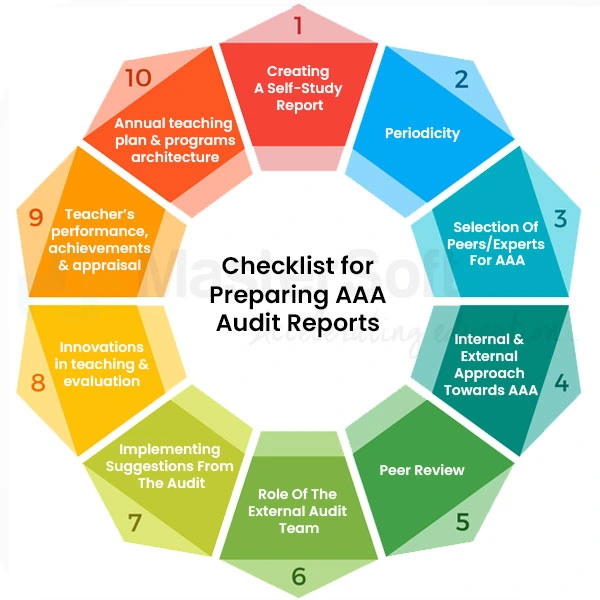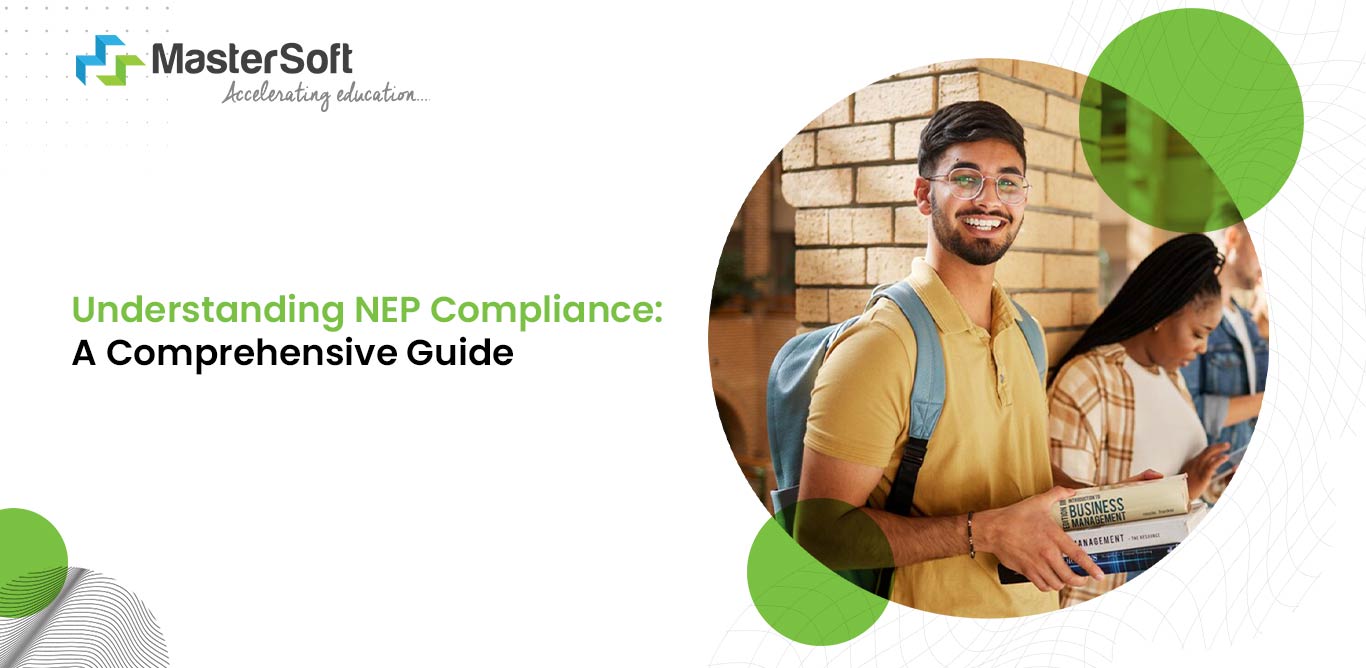24, September 2021
The NAAC (National Assessment and Accreditation Council) evaluates the quality of education in the Higher Education Institutes and makes sure that the colleges are offering top-class education for the students in all aspects such as research, projects, internships, classes, job opportunities, and others. Under this, the NAAC expects the colleges to sign an Academic and Administrative Audit (AAA) in which the institute has to assess and monitor their processes with a well-planned system of internal and external reviews.
To bring new academic reforms and keep track of the progress, and support reforms of the Higher Education Institutes (HEIs), the implementation of academic and administrative audits of colleges has become an important aspect.
In academics, an audit is an educational term given for the completion of a course of study. In the process of an academic audit, neither the student’s performance is assessed nor the grade is awarded to them.
What Is Student Record Management System And What Are Its Benefits?
In academics, audit is an educational term that is used for completion of the course of study. In this system, no student is evaluated for their performance nor any grades are awarded to them.
Let us understand what Academic & Administrative Audit is...
- Academic Audit
- Administrative Audit
Academic audit refers to a systematic way of reviewing the quality of education in an institute. It is aimed towards quality assurance and in bringing improvements in the education system of the college.
Administrative audit refers to thorough evaluation of the administrative processes in an institute with respect to its efficiency, and effectiveness. The audit aims towards building and assessing policies, strategies, operations and functions of the institutes.
Aim of Academic & Administrative Audit (AAA)
The main aim of the AAA is to encourage reviews about the college from the peers that are inside and outside of the institution by visiting the sites and conducting a self-study about the processes carried out there. This helps them to ensure the quality of the standards in comparison with the previously set benchmarks by the NAAC. Further, the institutes get an opportunity to understand the shortcomings and improve the quality of education of the various processes and systems of the college. This includes evaluation of all the curricular and co-curricular programs and activities which eventually helps the institutes to maintain the high education standards on a long-term basis.
How to conduct an Academic & Administrative Audit (AAA)?

Institutions can conduct AAA in the following steps.
#1: Creating a Self-Study Report
It begins with all the departments of the institute conducting a self-study report which will be about the seven NAAC criteria points of the various departments respectively. Further, this has to include all the activities and processes of the department along with the documents supporting them. The report should have a major emphasis on several points, a few of which are mentioned below.
- Innovations in various systems like teaching, exams, and evaluation
- Documentation of daily activities and performance of the faculty members
- Major emphasis on course and teaching plans as well as program architecture that is prepared annually
- Implementation of strategies to encourage Outcome-Based Education(OBE), PSO, CO mapping, and PO
- Proper guidance, coaching, counseling, and mentoring programs are held in college
- Research activities, projects, publications, and consultancy programs are held in the institute
- Workshops and conferences held
- Startups or any entrepreneurial activities by students
- Teacher’s performance along with their professional and personal achievements
- Placements, internships, offered by the institute
- Soft skills, life skills, and personal grooming activities
- Social activities like waste management, gender sensitivity, and others
- Alumni programs and resource mobilization
#2: Periodicity
There are a few institutes which undertake AAA once every year, while some of them perform once in three to five years. However, the suggested practice would be to exercise internal reviews every year and involve the external peers every three to five years.
#3: Selection of Peers/Experts for AAA
Technically, there are no specific selection qualifications required for AAA. But the point to be considered is that the peers should be able to command respect from the college faculty in reference to their academic distinctions, professionalism and experience in the industry.
#4: Internal & External Approach Towards AAA
The internal review of the report is conducted by the IQAC of the institution, whereas the external review can be performed by the University or some other peers.
#5: Peer Review
After the self-study report is created for every department, the documents and evidence about the claims mentioned in the report are attached. Then, the internal audit team will evaluate it. After the report is assessed by the internal audit team, they will make another report based on their observations and submit it to the institute’s principal. The principal will carefully evaluate the entire process and then it will go to the IQAC (Internal Quality Assurance Cell) for implementing the recommendations and ideas.
The IQAC team will go through the suggestions of the internal audit team and then implement them in the self-study report.
#6: Role of the External Audit Team
The external audit team comes into the picture after the modification of the report based on the recommendations. They will come forward to conduct the external Academic and Administrative Audits (AAA).
They will visit the institute with a planned schedule and conduct the audit according to it.
After a thorough evaluation of the report, and talking with the principal and IQAC team, they will submit a report to the principal in the exit meeting.
#7: Implementing Suggestions From the Audit
The external audit team gives suggestions to the college principal, which are then passed on to the IQAC for their implementation. After that, they will come up with a detailed plan which will implement those suggestions in various phases across the institute.
In this way, by undertaking the AAA and implementing the IQAC team, the institutes can maintain the highest quality of education regularly. As per the NAAC, the institutes should conduct the AAAs regularly. This requires a lot of work by the institute’s staff along with the creation of reports, collecting evidence, getting involvement from all the departments, and scheduling tasks. If the suggestions and recommendations offered by the audits are implemented properly, they can ensure the highest quality of education in the institutes.
What Is NAAC Accreditation? Importance & Benefits Of NAAC Accreditation
Advantages of AAA for Students & Faculty
The following are the advantages of AAA for students
- Offers better education for the students
- The college earns global recognition offering better opportunities
- Excellent teaching faculty
- Access to research facilities, workshops, and programs
- Major focus on building skills and achieving goals
The following are the advantages of AAA for faculty
- The teachers are clear about their responsibilities
- It reduces the unnecessary workload on teachers
- It helps them to focus on student learning and development
How can MasterSoft help you with the AAA process?
MasterSoft ERP solution is one of the most trusted organizations that offer a one-stop solution to all of your institute’s processes and data management requirements. Along with the school and student management systems, the company also brings light on the cloud-based Accreditation Data Management System which offers ease to several processes and tasks such as compilation of data, management, and assembly of reports in the required formats. The software ensures the smooth functioning of all the departments and their deliverables along with maintaining transparency among them. It allows multiple logins and enables faculty to create reports and maintain data with proofs and evidence.
Conducting AAA is a regular process and hence it is important to do it efficiently. The educational ERP software brings ease and cuts the downtime required for carrying out the lengthy processes.
Get a Step Ahead in Accreditation Journey with MasterSoft's Accreditation Data Management Software!
Mobile: 08448010216
Email:info@mastersofterp.com













